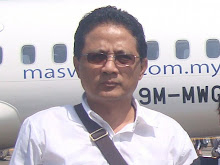
1. ASEAN has enjoyed a mixed institutional experience since its advent in August 1967. The past three decades and more have seen the Association manage intra-mural tensions with some success and also act as a diplomatic community speaking with a single voice during the course of the Cambodian conflict.
2. Since the end of the Cold War, ASEAN has assumed a diplomatic centrality within the ARF but has also faced evident difficulties in sustaining collective consensus as a result of the impact of regional economic crisis and an enlargement of membership to coincide with geographic Southeast Asia.
3. ASEAN has lived through a major shift in the regional strategic environment of Southeast Asia. In the 1960s, the outlook for regional security and stability in Southeast Asia was particularly grim. The region was portrayed variously as a “ region of revolt “, the “ Balkans of the East “, or a “ region of dominoes “.
4. The weak socio-political cohesion of the region’s new nation states, the legitimacy problem of several of the region’s postcolonial governments, interstate territorial disputes, intra-regional ideological polarisation and intervention by external powers, were marked features of the geopolitical landscape of Southeast Asia. These conflicts posed a threat not only to the survival of some of the region’s new states, but also to the prospects for regional order as a whole.

No comments:
Post a Comment